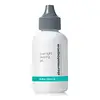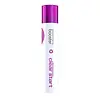What's inside
What's inside
 Key Ingredients
Key Ingredients

 Benefits
Benefits

 Concerns
Concerns

 Ingredients Side-by-side
Ingredients Side-by-side

Salicylic Acid 2%
MaskingWater
Skin ConditioningPEG-32
HumectantButylene Glycol
HumectantPvm/Ma Decadiene Crosspolymer
Niacinamide
SmoothingDipotassium Glycyrrhizate
HumectantNordihydroguaiaretic Acid
AntioxidantZinc Gluconate
Skin ConditioningZinc Acetate
AntimicrobialMahonia Aquifolium Root Extract
AstringentLavandula Angustifolia Flower/Leaf/Stem Extract
MaskingCamellia Oleifera Leaf Extract
AstringentSpiraea Ulmaria Extract
AstringentAesculus Hippocastanum Seed Extract
Skin ConditioningCrithmum Maritimum Extract
Skin ConditioningYeast Extract
Skin ConditioningMelaleuca Alternifolia Leaf Oil
AntioxidantRosmarinus Officinalis Leaf Oil
MaskingSalvia Officinalis Oil
MaskingCitrus Aurantium Dulcis Oil
MaskingGeranium Maculatum Oil
MaskingZingiber Officinale Root Oil
MaskingCymbopogon Martini Oil
MaskingCymbopogon Nardus Oil
MaskingSodium Hyaluronate
HumectantBiotin
AntiseborrhoeicPanthenol
Skin ConditioningCaffeine
Skin ConditioningCamphor
Masking10-Hydroxydecanoic Acid
Skin ConditioningSebacic Acid
BufferingCeramide AP
Skin Conditioning1,10-Decanediol
SolventOleanolic Acid
Skin ConditioningXanthan Gum
EmulsifyingCarbomer
Emulsion StabilisingPolysorbate 20
EmulsifyingPEG-40 Hydrogenated Castor Oil
EmulsifyingAmmonium Glycyrrhizate
MaskingPropylene Glycol
HumectantGlycerin
HumectantPEG-60 Almond Glycerides
EmulsifyingHydrogenated Vegetable Oil
EmollientCaprylyl Glycol
EmollientSodium Hydroxide
BufferingCaprylic/Capric Triglyceride
MaskingChlorphenesin
AntimicrobialPhenoxyethanol
PreservativeLimonene
PerfumingLinalool
PerfumingCitronellol
PerfumingGeraniol
PerfumingSalicylic Acid 2%, Water, PEG-32, Butylene Glycol, Pvm/Ma Decadiene Crosspolymer, Niacinamide, Dipotassium Glycyrrhizate, Nordihydroguaiaretic Acid, Zinc Gluconate, Zinc Acetate, Mahonia Aquifolium Root Extract, Lavandula Angustifolia Flower/Leaf/Stem Extract, Camellia Oleifera Leaf Extract, Spiraea Ulmaria Extract, Aesculus Hippocastanum Seed Extract, Crithmum Maritimum Extract, Yeast Extract, Melaleuca Alternifolia Leaf Oil, Rosmarinus Officinalis Leaf Oil, Salvia Officinalis Oil, Citrus Aurantium Dulcis Oil, Geranium Maculatum Oil, Zingiber Officinale Root Oil, Cymbopogon Martini Oil, Cymbopogon Nardus Oil, Sodium Hyaluronate, Biotin, Panthenol, Caffeine, Camphor, 10-Hydroxydecanoic Acid, Sebacic Acid, Ceramide AP, 1,10-Decanediol, Oleanolic Acid, Xanthan Gum, Carbomer, Polysorbate 20, PEG-40 Hydrogenated Castor Oil, Ammonium Glycyrrhizate, Propylene Glycol, Glycerin, PEG-60 Almond Glycerides, Hydrogenated Vegetable Oil, Caprylyl Glycol, Sodium Hydroxide, Caprylic/Capric Triglyceride, Chlorphenesin, Phenoxyethanol, Limonene, Linalool, Citronellol, Geraniol
Water
Skin ConditioningPPG-15 Stearyl Ether
EmollientButylene Glycol
HumectantGlycerin
HumectantIsopropyl Lauroyl Sarcosinate
Skin ConditioningNiacinamide
SmoothingSalicylic Acid
MaskingCetearyl Glucoside
Emulsifying1,2-Hexanediol
Skin ConditioningPolysorbate 20
EmulsifyingHydroxyacetophenone
AntioxidantChlorella Vulgaris Extract
Skin ConditioningTerpineol
MaskingThymol
AntimicrobialChondrus Crispus Extract
Skin ConditioningCitrus Aurantium Dulcis Peel Oil
MaskingLactic Acid
BufferingSodium Hyaluronate
HumectantDimethicone
EmollientXanthan Gum
EmulsifyingSclerotium Gum
Emulsion StabilisingLecithin
EmollientPullulan
Propanediol
SolventTetrasodium Glutamate Diacetate
Silica
AbrasiveSodium Hydroxide
BufferingSodium Citrate
BufferingLimonene
PerfumingWater, PPG-15 Stearyl Ether, Butylene Glycol, Glycerin, Isopropyl Lauroyl Sarcosinate, Niacinamide, Salicylic Acid, Cetearyl Glucoside, 1,2-Hexanediol, Polysorbate 20, Hydroxyacetophenone, Chlorella Vulgaris Extract, Terpineol, Thymol, Chondrus Crispus Extract, Citrus Aurantium Dulcis Peel Oil, Lactic Acid, Sodium Hyaluronate, Dimethicone, Xanthan Gum, Sclerotium Gum, Lecithin, Pullulan, Propanediol, Tetrasodium Glutamate Diacetate, Silica, Sodium Hydroxide, Sodium Citrate, Limonene
 Reviews
Reviews

Ingredients Explained
These ingredients are found in both products.
Ingredients higher up in an ingredient list are typically present in a larger amount.
Butylene Glycol (or BG) is used within cosmetic products for a few different reasons:
Overall, Butylene Glycol is a safe and well-rounded ingredient that works well with other ingredients.
Though this ingredient works well with most skin types, some people with sensitive skin may experience a reaction such as allergic rashes, closed comedones, or itchiness.
Learn more about Butylene GlycolGlycerin is already naturally found in your skin. It helps moisturize and protect your skin.
A study from 2016 found glycerin to be more effective as a humectant than AHAs and hyaluronic acid.
As a humectant, it helps the skin stay hydrated by pulling moisture to your skin. The low molecular weight of glycerin allows it to pull moisture into the deeper layers of your skin.
Hydrated skin improves your skin barrier; Your skin barrier helps protect against irritants and bacteria.
Glycerin has also been found to have antimicrobial and antiviral properties. Due to these properties, glycerin is often used in wound and burn treatments.
In cosmetics, glycerin is usually derived from plants such as soybean or palm. However, it can also be sourced from animals, such as tallow or animal fat.
This ingredient is organic, colorless, odorless, and non-toxic.
Glycerin is the name for this ingredient in American English. British English uses Glycerol/Glycerine.
Learn more about GlycerinLimonene is a fragrance that adds scent and taste to a formulation.
It's found in the peel oil of citrus fruits and other plants such as lavender and eucalyptus. The scent of limonene is generally described as "sweet citrus".
Limonene acts as an antioxidant, meaning it helps neutralize free radicals.
When exposed to air, oxidized limonene may sensitize the skin. Because of this, limonene is often avoided by people with sensitive skin.
The term 'fragrance' is not regulated in many countries. In many cases, it is up to the brand to define this term. For instance, many brands choose to label themselves as "fragrance-free" because they are not using synthetic fragrances. However, their products may still contain ingredients such as essential oils that are considered a fragrance.
Learn more about LimoneneNiacinamide is a multitasking form of vitamin B3 that strengthens the skin barrier, reduces pores and dark spots, regulates oil, and improves signs of aging.
And the best part? It's gentle and well-tolerated by most skin types, including sensitive and reactive skin.
You might have heard of "niacin flush", or the reddening of skin that causes itchiness. Niacinamide has not been found to cause this.
In very rare cases, some individuals may not be able to tolerate niacinamide at all or experience an allergic reaction to it.
If you are experiencing flaking, irritation, and dryness with this ingredient, be sure to double check all your products as this ingredient can be found in all categories of skincare.
When incorporating niacinamide into your routine, look out for concentration amounts. Typically, 5% niacinamide provides benefits such as fading dark spots. However, if you have sensitive skin, it is better to begin with a smaller concentration.
When you apply niacinamide to your skin, your body converts it into nicotinamide adenine dinucleotide (NAD). NAD is an essential coenzyme that is already found in your cells as "fuel" and powers countless biological processes.
In your skin, NAD helps repair cell damage, produce new healthy cells, support collagen production, strengthen the skin barrier, and fight environmental stressors (like UV and pollution).
Our natural NAD levels start to decline with age, leading to slower skin repair, visible aging, and a weaker skin barrier. By providing your skin niacinamide, you're recharging your skin's NAD levels. This leads to stronger, healthier, and younger looking skin.
Another name for vitamin B3 is nicotinamide. This vitamin is water-soluble and our bodies don't store it. We obtain Vitamin B3 from either food or skincare. Meat, fish, wheat, yeast, and leafy greens contain vitamin B3.
The type of niacinamide used in skincare is synthetically created.
Learn more about NiacinamidePolysorbate 20 is made by combining ethoxylation of sorbitan, ethylene oxide, and lauric acid. It is a mild cleansing agent, surfactant, and emulsifier.
As a surfactant, it helps collect dirt and oils for washing. Emulsifiers prevent oils and water from separating.
Polysorbate 20 also adds scent to a product. Since it is made using sorbitol, it has a sweet scent. Sorbitol can also be found in fruits such as apples and peaches.
The lauric acid used to create Polysorbate 20 is often derived from coconuts.
Polysorbate 20 may not be fungal acne safe.
Learn more about Polysorbate 20Salicylic Acid (also known as beta hydroxy acid or BHA) is a well-known ingredient for treating skin that struggles with acne and clogged pores. It exfoliates both the skin's surface and deep within the pores to help clear out buildup, control oil, and reduce inflammation.
Unlike AHAs (alpha hydroxy acids), salicylic acid is oil-soluble. This allows it to penetrate into pores which makes it especially effective for treating blackheads and preventing future breakouts.
Salicylic acid is also known for its soothing properties. It has a similar structure to aspirin and can calm inflamed or irritated skin, making it a good option for acne-prone skin that is also sensitive.
Concentrations of 0.5-2% are recognized by the U.S. FDA as an over-the-counter topical acne product.
It can cause irritation and/or dryness if one's skin already has a compromised moisture barrier, so it's best to focus on repairing that before introducing this ingredient into your routine.
While salicylic acid does not increase sun sensitivity, it’s still important to wear sunscreen daily to protect your skin.
If you are looking for the ingredient called BHA or Butylated Hydroxyanisole, click here.
Learn more about Salicylic AcidSodium Hyaluronate is hyaluronic acid's salt form. It is commonly derived from the sodium salt of hyaluronic acid.
Like hyaluronic acid, it is great at holding water and acts as a humectant. This makes it a great skin hydrating ingredient.
Sodium Hyaluronate is naturally occurring in our bodies and is mostly found in eye fluid and joints.
These are some other common types of Hyaluronic Acid:
Learn more about Sodium HyaluronateSodium Hydroxide is also known as lye or caustic soda. It is used to adjust the pH of products; many ingredients require a specific pH to be effective.
In small amounts, sodium hydroxide is considered safe to use. However, large amounts may cause chemical burns due to its high alkaline.
Your skin has a natural pH and acid mantle. This acid mantle helps prevent harmful bacteria from breaking through. The acid mantle also helps keep your skin hydrated.
"Alkaline" refers to a high pH level. A low pH level would be considered acidic.
Learn more about Sodium HydroxideWater. It's the most common cosmetic ingredient of all. You'll usually see it at the top of ingredient lists, meaning that it makes up the largest part of the product.
So why is it so popular? Water most often acts as a solvent - this means that it helps dissolve other ingredients into the formulation.
You'll also recognize water as that liquid we all need to stay alive. If you see this, drink a glass of water. Stay hydrated!
Learn more about WaterXanthan gum is used as a stabilizer and thickener within cosmetic products. It helps give products a sticky, thick feeling - preventing them from being too runny.
On the technical side of things, xanthan gum is a polysaccharide - a combination consisting of multiple sugar molecules bonded together.
Xanthan gum is a pretty common and great ingredient. It is a natural, non-toxic, non-irritating ingredient that is also commonly used in food products.
Learn more about Xanthan Gum